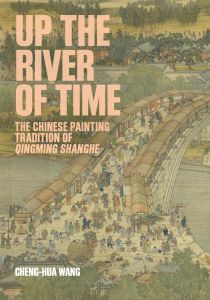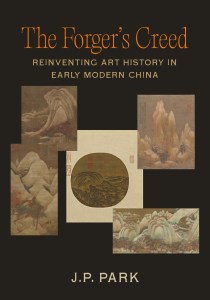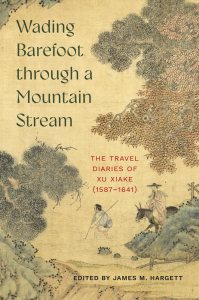By Type
ALL
Digital
Education
Fellowships
Open-Access
Performances
Publications
Travel
Conferences
Workshops
Exhibitions
Other
By Year
2025
Observing the Unseen: Curiosity and Common Knowledge in Early Modern China
By Andrew Schonebaum
University of Washington Press, December 2025
Observing the Unseen explores perspectives in early-modern China around such questions as, how did people understand invisible or puzzling aspects of their natural world? How were things investigated and envisioned when they lacked visual context, either because they were everywhere (water, wind, life) or nowhere (dragons, the future)? Schonebaum pursues these topics by examining “practical” literature; local and court histories, gazetteers, and newspapers; and “entertainment” literature. The result is an enlightening sweep through early-modern imaginings and beliefs.
2025
Up the River of Time: The Chinese Painting Tradition of Qingming Shanghe
By Cheng-hua Wang
Harvard University Asia Center, Publications Program, December 2025

This book is the first study in any language that treats the entire cultural constellation of the more than 100 surviving handscroll paintings with the title Qingming shanghe (Up the River during Qingming), which span six hundred years, from the early twelfth to the mid-eighteenth centuries. The book not only examines the production contexts of different versions in the Song, Ming, and Qing dynasties, but also explores the cultural imaginings that the name Qingming shanghe could evoke. Furthermore, it takes a deeper dive into the artistic, political, and sociocultural realms that these paintings helped shape.
2024
CHINOPERL Anniversary Volume: Music, Language, and Drama in Late Imperial China
CHINOPERL
Principal Investigator(s): Jing Shen, Eckerd College
CHINOPERL is an interdisciplinary and international peer-reviewed journal devoted to Chinese oral and performing literature with authors and readers from all over the world. Revolving around the thread of “music, language, and drama,” articles for this anniversary volume of CHINOPERL delve into collections of arias, qin handbooks, and fragments of play texts from the Ming dynasty and related periods. These musical and literary analyses speak to broader late-imperial intellectual trends, contributing to current scholarly conversations about the subjects.
2024
The Empress and the Dragon Throne: Women in the Imperial Family in the First Hundred Years of China’s Ming Dynasty
By Ellen Soulliere
Hong Kong University Press, spring 2025
The first of three planned volumes spanning the entire Ming dynasty, the book examines the social, political, economic, and cultural hierarchies, rituals, and codes of behavior that defined and protected the status of women within the family and the household during the early Ming dynasty. Richly informed by evidence from texts and material culture, it analyses and interprets women’s contributions to the many successes and the eventual failure of the dynasty and the state.
2024
The Forger’s Creed: Reinventing Art History in Early Modern China
By J.P. Park
University of California Press, March 2025

The Forger’s Creed examines how and why numerous fake texts, forged paintings, and bogus art theories were fabricated in the late Ming and early Qing periods. Investigating the forgeries as sites of conflict and negotiation in the production and consumption of art invisibly shared between different social groups, Park considers the establishment of a refined and elegant public sphere under the rubric of “legitimate lineage” as an attempt by elites to regulate public discourse on art.
2024
The Woven Image: The Making of Mongol Art in the Yuan Empire
By Yong Cho
Yale University Press, forthcoming February 2026
The Woven Image: The Making of Mongol Art in the Yuan Empire paints a drastically different picture of the visual and material worlds of the Mongols in their imperial court. It focuses on fabric images to demonstrate that in the eastern half of their world empire known as the Yuan (1271-1368), the Mongol rulers created a completely new system of the arts. This new system subverted the traditional hierarchies of visual and material arts that had thrived in the various dynasties that previously ruled East Asia.
2024
Wading Barefoot through a Mountain Stream: The Travel Diaries of Xu Xiake (1587-1641)
James Hargett, lead translator and editor
University of Washington Press, forthcoming July 2025

Xu Xiake stands as China’s most distinguished traveler and travel writer, whose extensive journeys through Ming-dynasty China offer a unique window into the era’s geography, history, and cultural traditions. This new, fully annotated English translation includes maps and illustrations, allowing readers to follow Xu’s routes. It will be indispensable for scholars of Chinese history, geography, and travel writing and will bring Xu Xiake’s extraordinary journeys to a broader audience. The award from GHF will support print and open-access editions.
2023
Games and Play in Chinese and Sinophone Cultures
Edited by Li Guo, Douglas Eyman, and Hongmei Sun
University of Washington Press, June 2024

In exploring games and practices of play across social and historical contexts, this volume examines representations of gender, class, materiality, and imaginations of the nation in Chinese and Sinophone contexts, while addressing ways in which games inhabit, represent, disrupt, or transform cultural and social practices. Both analog and computer games are represented in analyses that draw connections between the traditional and the modern and between local or regional and higher-order economic, cultural, and political structures. Among the topics explored are rock carvings of board games, weiqi cultures, scholars’ and courtesans’ games, gambling, games based on literature, video-game politics, and appropriation of Chinese culture in video games.